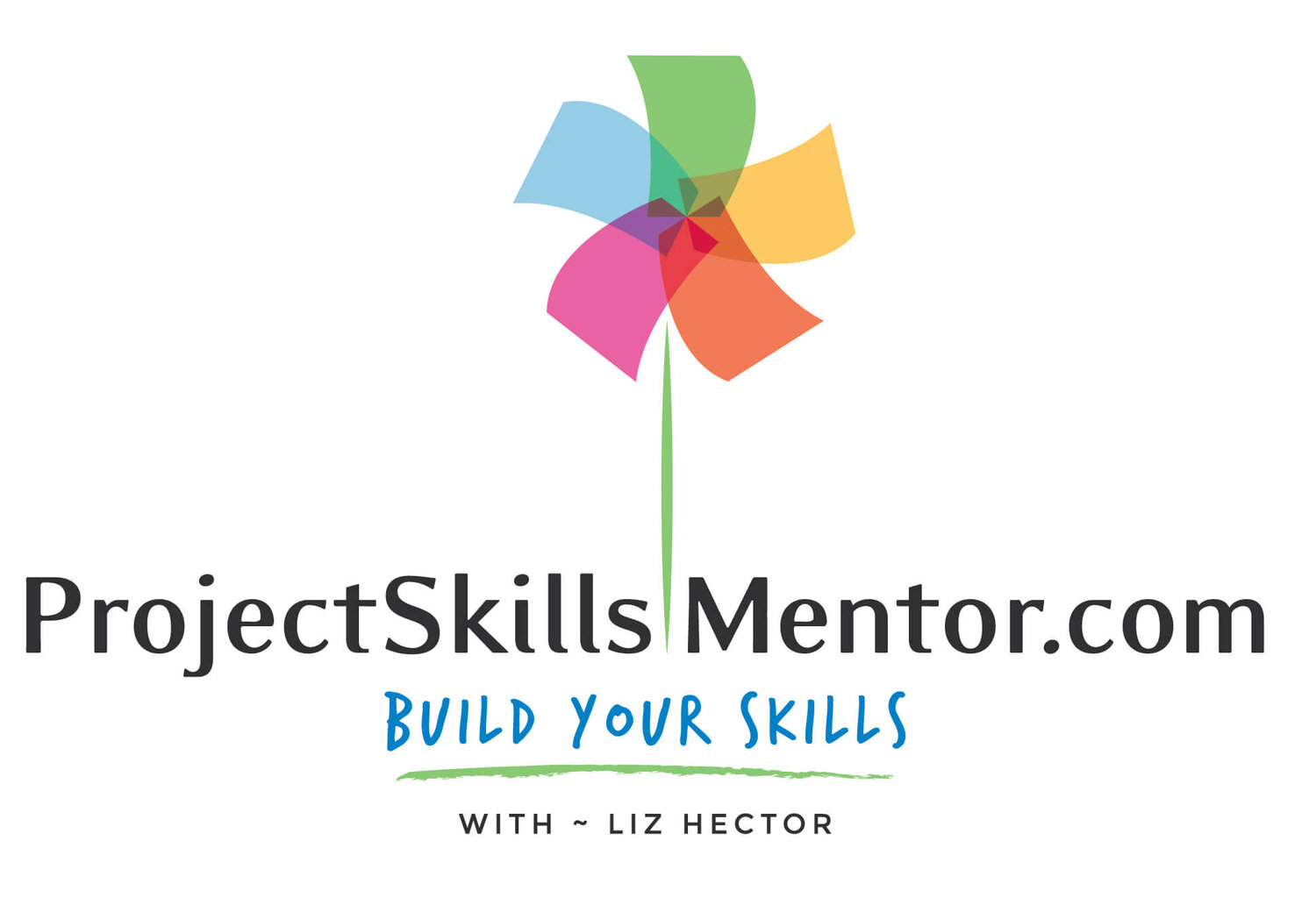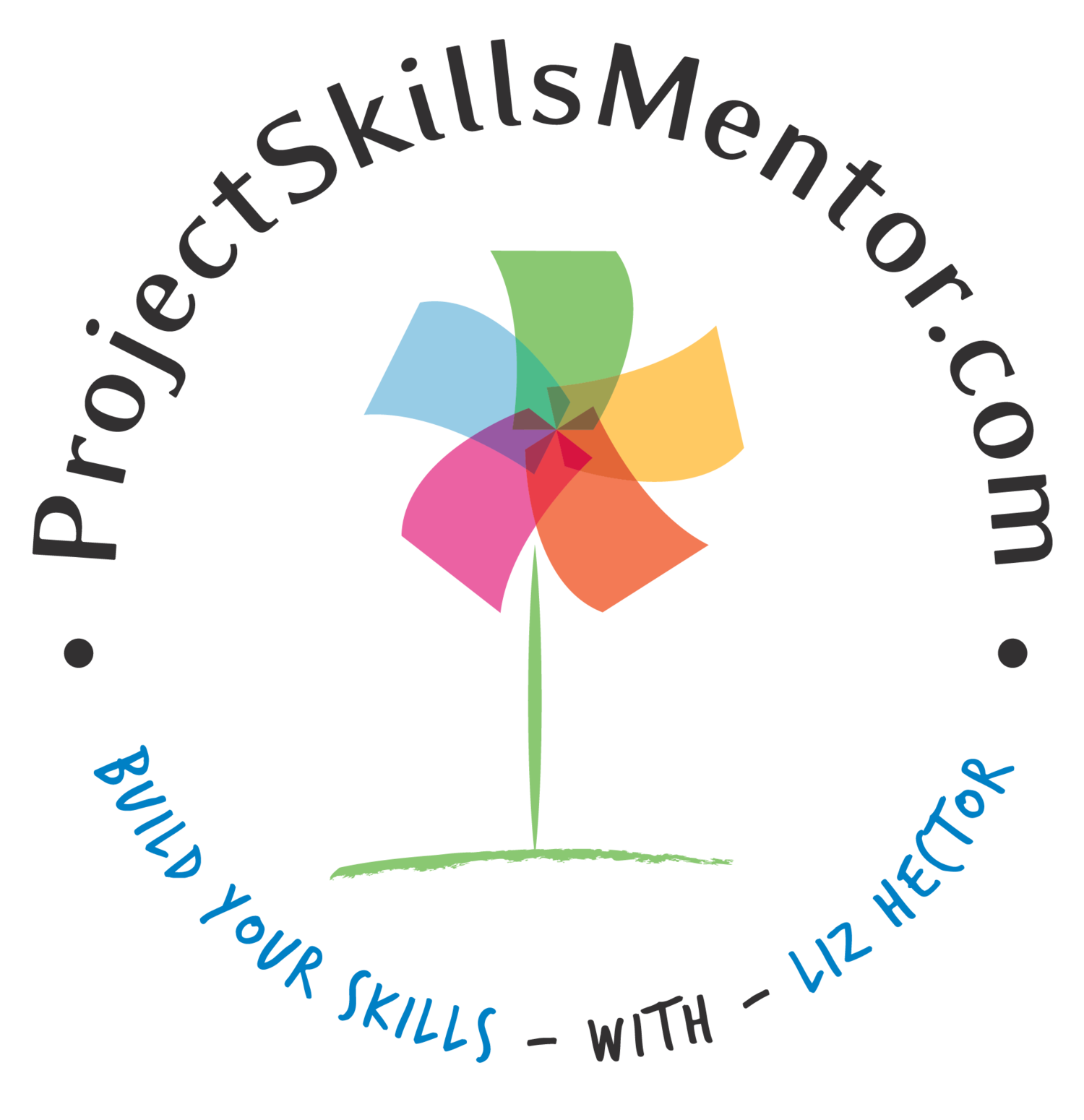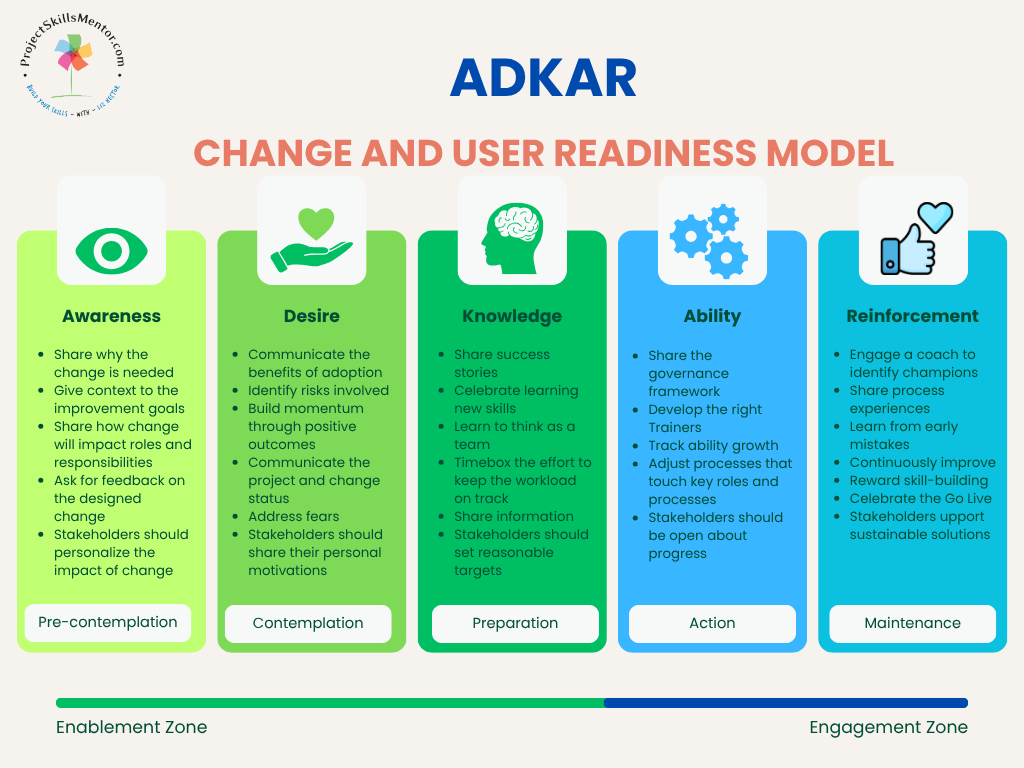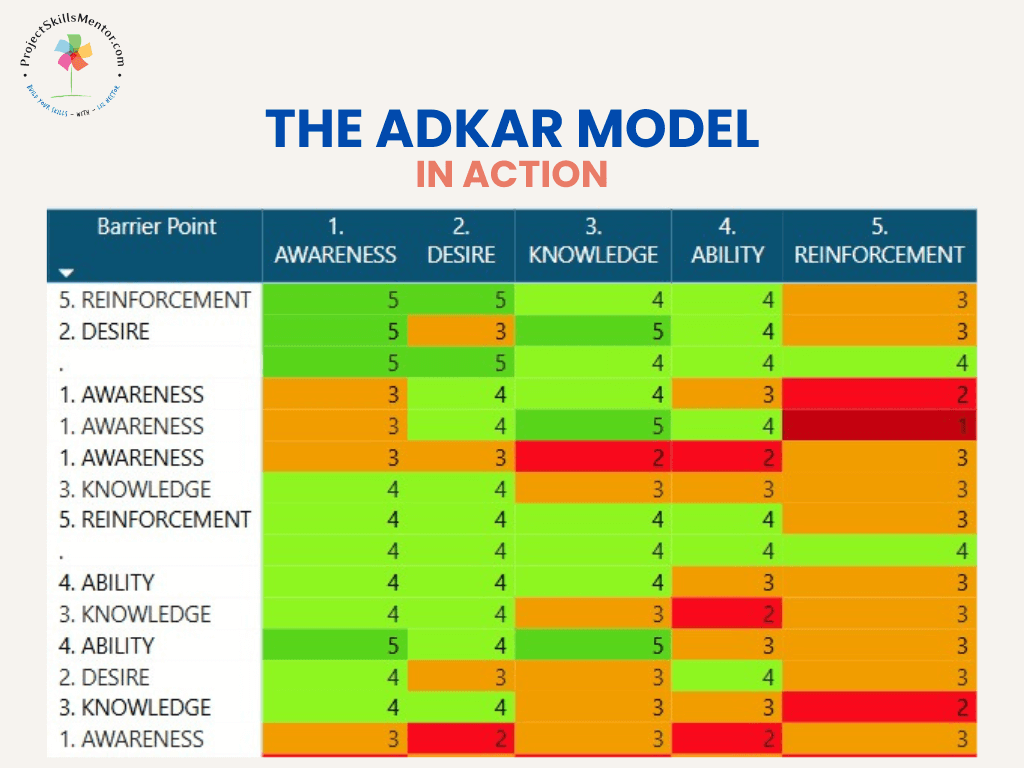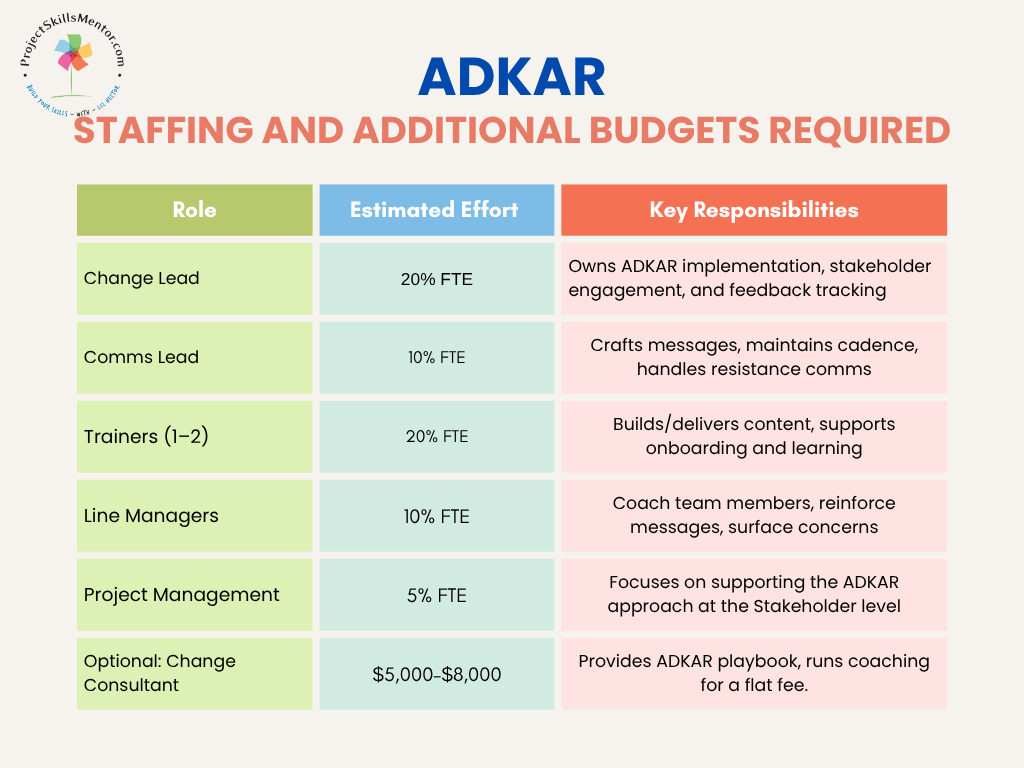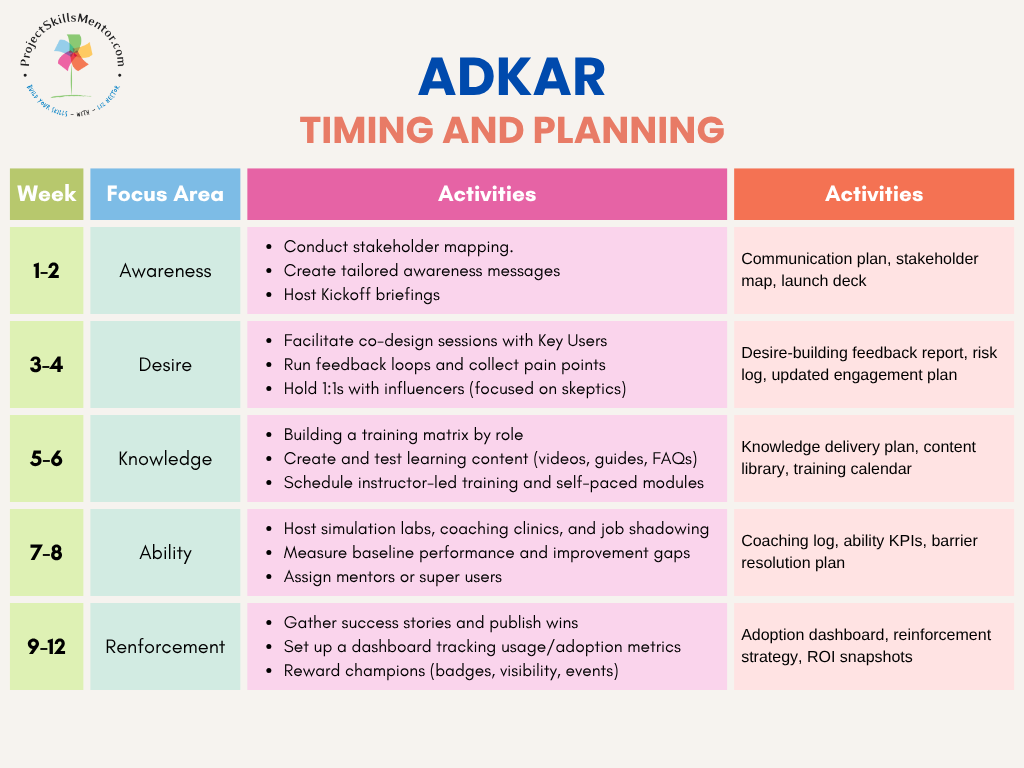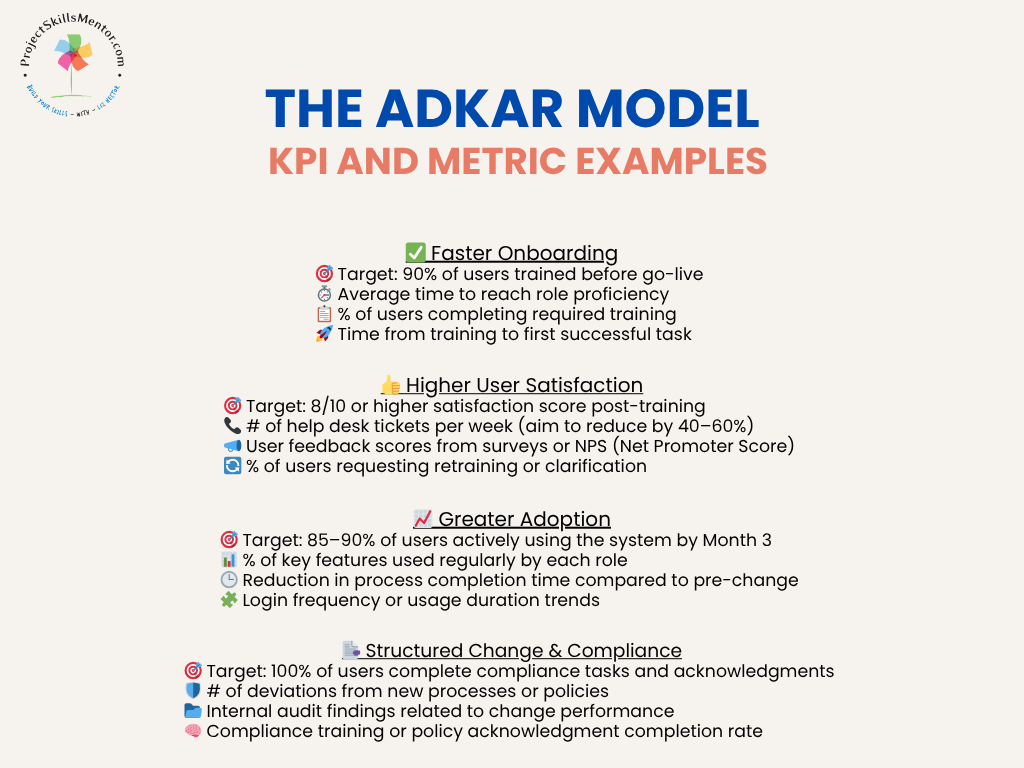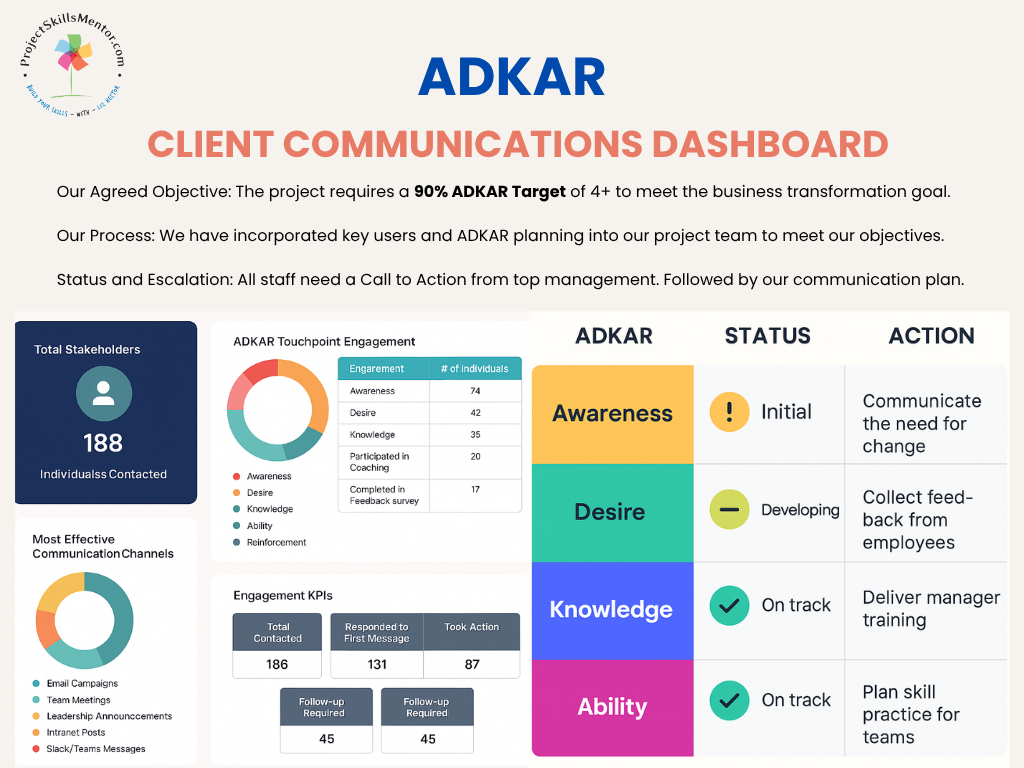Driving Change That Sticks: How the ADKAR Model Works
Change is no longer a one-off event—it's an ongoing process. Whether implementing a new ERP system, restructuring teams, or navigating hybrid work arrangements, your project's success depends not only on strategy and execution but also on the people involved. Technical rollouts may go live, but results suffer if your people don't adopt the change. Delivering on time, on budget, and in scope is no longer enough. Success requires ensuring business readiness to achieve the desired business outcomes. But managing change needs more; what gets measured gets managed. Managers often drive project change based on gut feeling. Managers will fail if there is no clear method or model to consistently and regularly focus on the progress of the change.
This article is made in collaboration with Gijs Abrahams. See the full interview with Gijs coming this Thursday.
User Readiness Success
Know your Goals
Adopt a Proven Model
Build Your Plan
The job of the Project Manager may be to deliver the solution, but stopping with 'handing over the system' is not the end game. Ensuring the organization is ready to accept the new solution and everything that comes with it is critical to success.
“70% of change efforts fail due to resistance and poor leadership.”
— McKinsey Research
Why Most Change Fails—and What's Missing
Organizations often focus on processes, tools, and timelines—but forget the people. This leads to a familiar pattern:
A system launches, but users don't log in, or users don’t use all of the functionality.
A process changes, but behavior stays the same.
Structures shift, but performance declines.
What's missing? Awareness and ownership. They disengage when key users don't understand the change or feel left out.
“Employees who don’t understand the need for change will resist it—even if they understand what the change is.”
— Jeff Hiatt, Founder of Prosci
Why Businesses and Projects Need ADKAR
While managers excel at delivering scope, time, and budget, most project failures are traced back to people-related issues.
As a Project Manager, ask yourself: Is my customer ready, willing, and able to use the solution?
What does that mean? Business transformations generally impact People, Processes, and Technology, including changes to policies and roles. Users must be ready to adapt to and adopt the changes required to transform the business in the long term. Assessing Key User Readiness is key to your success.
Okay, so this is an important, if under-managed issue. But is there a proven method to check for user readiness?
Yes, there is: The ADKAR model.
Structured approaches like ADKAR are proven to boost outcomes:
Organizations using a structured change model are six times more likely to meet their objectives.
Focusing on individual adoption can raise success rates by up to 79%.
ADKAR is a proven framework for leading change that lasts. Let's review why you need it, how to implement it, and how to sell the value of using this model to your team and customers.
Real-World Example: ERP Implementation
A global manufacturer rolled out Microsoft Dynamics 365 across 12 countries. The technical implementation was flawless—but adoption lagged.
What went wrong:
Low Awareness: Employees lacked understanding of why the change was necessary. Low communication meant the business goals and details of the change were not adequately presented.
Limited Knowledge/Ability: Managers lacked the training to effectively coach their teams. So, the teams didn't understand the importance of user readiness.
What they did:
Launched internal campaigns to build Awareness and Desire.
Trained local "change champions" to transfer Knowledge and build Ability.
Rewarded early adopters to drive Reinforcement.
The outcome:
User adoption rose by 40%.
System utilization reached 95% in 6 months.
ADKAR: A Step-by-Step Guide for Managers
What is ADKAR
ADKAR is a five-step model developed by Prosci to guide individual user change assessment. These 5 steps are based on a self-assessment process. Users check in at regular intervals throughout the project to track their perception of readiness to accept the business solution.
The key steps in ADKAR are to focus on your user’s adoption of the business solution change:
Awareness: Understand why the change is needed
Desire: Choose to participate and support the change
Knowledge: Learn how to change
Ability: Apply new skills and behaviors
Reinforcement: Sustain the change
When to Utilize ADKAR
The ADKAR model is implemented as a part of a departmental or project activity designed to enhance the user's journey of change. The model focuses on measuring the impact and success of change at the individual level based on user self-assessment through interviews and surveys.
What happens with these measurements? The example model below reflects a list of 12 solution users who have provided feedback at a point in time based on their awareness, understanding, and capabilities to adopt the business change.
Key information in this graphic focuses on the current Barrier Point for that user. Let’s review an example:
Row 1 displays a personal assessment that answers questions on Awareness, Desire, and other related topics. The User feels positive about the questions related to several areas (represented by a number 4 and a green bar). The exceptions are Desire and Reinforcement. Since Desire is a foundational status, it represents the Barrier Point. Or the issue that needs to be resolved for that user before they can move forward with user readiness. Later, this data is aggregated into an overview of how the organization as a whole is doing across all users impacted by the change, which we will see later.
It should be noted that this model is not about coercing staff into adoption; rather, it is about finding their why and building motivation toward adoption.
The ADKAR model is not limited to large-scale digital transformations—it's a versatile framework designed to support any organizational change that requires people to adopt new behaviors, mindsets, or ways of working. Whether you're leading a technology deployment or reshaping organizational culture, success depends on individuals making the shift, not just systems or structures.
Use the ADKAR model when your change initiative requires individual adoption to succeed. This includes both strategic transformations and day-to-day operational shifts. The model helps project managers, change agents, and sponsors guide people through the personal side of change—building awareness, nurturing Desire, and reinforcing new ways of working long after going live.
You should consider applying ADKAR to initiatives such as:
ERP, CRM, or other system upgrades: Because software success isn't just about implementation—it's about users embracing new processes.
Organizational restructuring: When roles, responsibilities, or reporting lines change, people need support to adapt.
Agile transformations: Shifting from traditional methods to Agile requires a profound mindset and cultural changes across teams.
Mergers & acquisitions (M&A): Integration efforts are more successful when people are guided through the uncertainty and realignment.
Policy or compliance changes: Even small shifts in rules or governance can fail without awareness and adoption at the individual level.
The more your initiative touches on how people work, decide, or collaborate, the more valuable ADKAR becomes in ensuring those changes take root and deliver results. It's especially powerful for planning and post-launch activities, guiding communication, training, coaching, and reinforcement.
A Manager’s 12-Week Example
Implementing ADKAR requires dedicated effort, but it does not have to be overwhelming. The key is to plan early and assemble the right team to execute change readiness assessments throughout the project lifecycle. In addition to your team, you will need staff with specific roles to support the project's processes. Include ADKAR in your resource plan from day one, not as an add-on. The time spent here protects your project from adoption delays, disengaged users, and post-launch fire drills. Let’s assume you have a 12-week project. Let’s run through the numbers and show you the impact in practical terms on your project.
In addition to your regular planning, additional staff roles or increased FTE will be needed to cover the new actions. This can be with limited support and training from an ADKAR consultant. Allowing the team to incorporate these activities into their existing jobs. Once trained and experienced, staff may be able to work more efficiently and effectively, thereby reducing the need for additional hours and FTE to complete the work.
The Phases of ADKAR in your Project
Project managers must go beyond planning and delivery to lead successful change and activate adoption. The ADKAR model provides managers with a structured approach to achieving just that. It does not matter whether your project uses waterfall or agile methods. User Readiness is required to help individuals move through the emotional and practical stages of change. Each step represents a building block for personal transition.
A word of caution when dealing with Train the Trainer models used by some projects and departments. This is an effective way to share knowledge. However, not all trainers possess the skill set to convey the why behind a business transformation, including the personal motivations users need to tap into. Also, adoption ability requires a holistic understanding of the change for that user. This can include roles, responsibilities, policies, and procedures. Trainers without coaching capabilities may struggle to deliver the knowledge needed to develop abilities and foster long-term adoption. Managers need to consider this constraint when assigning trainers.
Here's how to embed ADKAR into your project lifecycle:
Initiation
Awareness – Share the "Why" Behind the Change. People don't resist change—they resist change they don't understand. Start by clearly communicating why the change is happening. Use a blend of data (business case, performance gaps) and stories (customer complaints, team pain points) to make the change real and relevant. Identify the risks of not changing and tailor messages to your stakeholders' perspectives.
Planning
Desire – Build Commitment, Not Just Compliance. Change sticks when people choose to support it. Involve key users early—co-create change plans, pilot new workflows, and actively listen to concerns. Address fear, uncertainty, and frustration directly. Use empathy, influence, and incentives to build personal motivation. Desire is often the turning point between passive acceptance and enthusiastic ownership.
Knowledge – Equipped with the Right Skills and Information. Once people are brought in, they need to know how to change. Offer practical and role-specific training, FAQs, and job aids. Make learning accessible through multiple formats, including live sessions, e-learning, peer coaching, and on-demand guides. Knowledge building should be a continuous process, not a one-time event.
Execution
Ability – Translate Learning into Action. Knowing isn't the same as doing. Support people in applying new Knowledge through hands-on workshops, shadowing, and on-the-job coaching. Remove barriers to execution (e.g., conflicting priorities, lack of tools) and give feedback as they test new behaviors. Reinforce progress and course-correct without blame.
Reinforcement – Sustain the Change Over Time. Without reinforcement, even the most promising change fades. Recognize early adopters, celebrate small wins, and integrate the change into performance metrics, KPIs, and team rituals. Keep feedback loops open: Run retrospectives, pulse surveys, or informal check-ins to see what's working and where support is still needed. Make the new way of working feel normal and rewarding.
By embedding ADKAR into your project plan, you transform from a task-focused manager into a change leader. This improves outcomes, builds trust, increases adoption rates, and ensures long-term success.
How to “Sell” ADKAR To Your Client
Clients often focus on a solution's technical readiness, platforms, integrations, tools, but ignore the adoption risk. That's where ADKAR adds measurable value.
Tell Outcomes, Not Theory. Your message to your client depends on who your client is and their level of experience with change management. Focus on your key message, the benefits, and the reduction of risk metrics. Define how you will measure success and track it (see the dashboard example below).
Need a bit more help? Here is a script to help you get started with this draft Script
You wouldn’t launch a new product without testing. Don’t launch change without preparing your people.
Let’s align ADKAR with your implementation roadmap. The small investment now protects your technology investment, boosts team confidence, and ensures measurable success.
Technology doesn't generally fail; unsupported people can and do. Even the best systems fail if no one logs in, understands how to use them, or believes they will help. ADKAR closes the gap between deployment and ROI by focusing on adoption.
Let’s discuss what metric is most important to you. Then, let’s decide on our KPI and the level of ADKAR rating we need to achieve.
Ready to secure adoption and drive lasting impact? Let’s make ADKAR part of our plan. Let me tell you how I will keep you updated. Then let’s discuss which metrics should be part of our KPI’s for successful user readiness.
These metrics keep the focus on outcomes, not just activity, helping you adjust the plan, recognize success, and show tangible value to leadership and stakeholders.
Tracking adoption isn't guesswork. Utilize these practical metrics to demonstrate progress at each stage of change and validate the impact of your ADKAR strategy.
How to Keep Your Client Engaged
One of the most effective ways to keep your client aligned and invested in the change journey is by using a visual ADKAR dashboard. This tool provides a real-time snapshot of progress across each ADKAR stage. Tracking awareness levels, training participation, coaching touchpoints, and reinforcement milestones. The dashboard makes change management tangible and trackable by presenting clear status updates alongside action-oriented next steps. It transforms abstract change concepts into measurable results, enabling proactive course correction and celebrating wins. Regular reviews of this dashboard in project check-ins build trust and ensure shared accountability for success. It keeps everyone focused not just on delivery but on adoption, which drives lasting value.
Your Dashboard should reflect the project goals, the Key User objectives, and the status of change readiness. It’s also a good moment to remind your stakeholders of the model agreed upon and the actions they need to take to keep messages from the top consistent with project communications. If needed, create a call to action for management to play a role in supporting the user journey.
Get Started with ADKAR Today
Don't just manage change, lead it. Download the ADKAR Readiness Worksheet from the University of Vermont. Conduct a stakeholder audit, and involve your team in the change process. Because when you invest in people, change sticks.
Do you have questions or experiences with change management methods? Let us know in the comments below, and we will get back to you.
Special thanks to Gijs Abrahams for the collaboration and support with this topic.
